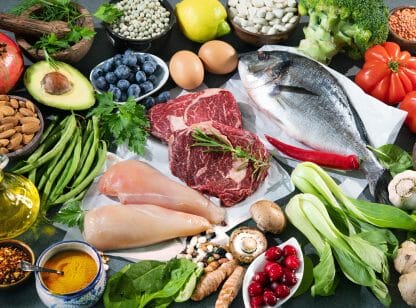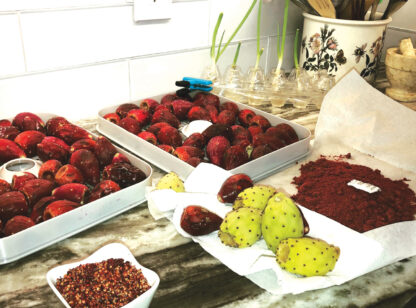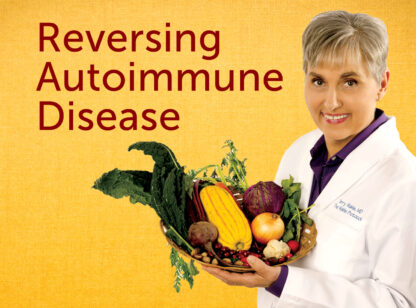The devastating loss of human life from COVID-19 has recently highlighted the immense power of tiny, invisible microbes to shape our human experience. Microbes are microscopic organisms, including a variety of widely diverse species of bacteria and viruses. Bacterial species are highly adaptable to surviving almost any habitat, be it boiling geysers, the depths of the darkest ocean vents, and even, as we know, in our own human intestines.

Microbiome is a term used to describe the vast ecosystem of mostly beneficial microbes that live along the lining of your intestines. Knowledge about the microbiome is exploding right now as scientists employ genomic sequencing technology to support links between an imbalance in the microbiome and just about every chronic disease ranging from acne to Alzheimer’s, diabetes and obesity.
Humans have co-evolved with microbiota in symbiosis over millennia. We rely on friendly gut bacterial species which reside in the large intestine for a myriad of chemical interactions that provide beneficial byproducts as diverse as vitamin K to tryptophan for the body’s use. The microbiome helps the human host by digesting fiber that humans lack the enzymes to digest. In the process of bacterial digestion or fermentation, many beneficial bi-products like those mentioned above are released for humans to use. Short-chain fatty acids (SCFAs) are especially important byproducts of bacterial fermentation, and the effects of certain SCFAs have anti-inflammatory actions in the body.
Some microbes are disruptive and it is not uncommon for these problematic species to colonize the gut. The beneficial symbiosis relies on balance — namely, the beneficial bacteria outnumbering the problematic, symptom-causing microbes, and keeping them in check is an important factor for overall health.
What can you do to encourage the growth of your friendly gut microbiome and discourage the growth of those less than friendly bugs? There are many simple things that, if done well and consistently, can go a long way in supporting your healthy flora.
- Reduce stress; if your stress level is affecting you negatively, your friendly microbes suffer
- Reduce processed foods of all varieties, including “healthy” food that comes in packages
- Increase your intake of dietary fiber, especially prebiotic fibers
- Reduce caffeine and alcohol intake
- Reduce added/refined sugar intake, this includes reducing artificial sweeteners
- Minimize the use of acid suppressing medications (PPIs and H2 blockers, for example, omeprazole or ranitidine)
- Minimize antibiotic use unless truly necessary
- Exercise, dance, swim, practice “Earthing,” spend time outdoors in nature
Fiber intake is a special topic and the key for many of us who want to optimize our microbiome health, especially those with more conventional American dietary habits. The signature of a healthy gut microbiome is a diversity of beneficial species. You can encourage this by feeding your microbiome a variety of plant fibers and indigestible starches. Prebiotic is the term used to describe sources of fiber that help beneficial microbes thrive. Including specific types of probiotic foods and prebiotic fiber in our diets can be a targeted approach for certain specific types of problems. In general, most Americans can benefit from simply increasing the diversity of plant fibers in their diet.
Fiber tolerance varies among individuals. A simple starting strategy is to focus on eating a wide variety of plant-based food. Foods that are rich sources of fiber include all fruits and vegetables, green leafy lettuces and greens, oats, lentils, beans, whole grains, nuts and seeds. You can easily add coconut, chia seed and flaxseed to many recipes. Apples, bananas, garlic, onion and eggplant are a few examples of prebiotic fiber sources. There are many sources of fiber and indigestible starches to meet even the strictest dietary needs. However, it may take a bit of trial and error to find those that work best with your physiology. While you should prioritize this intake from whole food sources, fiber supplements can be helpful.
According to microbiome research, increased fiber can have many benefits, including improved energy, skin tone, digestion, elimination, reduced pain, and even improved mood and memory.
You may experience minor uncomfortable adjustments to your usual bowel habits as you increase your daily fiber intake, especially if using supplements. This discomfort should be transitory. As you increase fiber, be sure to also increase your intake of water or another non-caffeinated unsweetened beverage such as herbal tea.
Once you determine the best sources of fiber for your microbiome, you should feel better overall because you and your microbiome will be working in harmony, symbiosis.
Dr. Jenny Wheeler is a board-certified family medicine physician who practices primary care medicine with Riverside-San Bernardino Indian Health in Thermal, CA. She is certified through the Institute of Functional Medicine and is available for functional medicine consults through Restore Health in Indian Wells.
















































Comments (0)